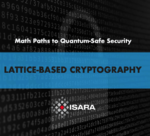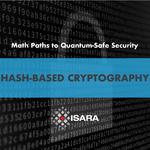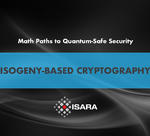ISARA Insights Blog
Featured Blog Post
Your Post-Quantum Cryptography Journey: Over the River and Through the Woods
Paul Lucier
Dec 08, 2021
‘Tis the season for visits to grandmother and Uncle Joe. ‘Tis also the season for organizations to start planning their roadmaps for a quantum-safe New Year. After all, the third round of the NIST PQC Standardization Process is expected to be completed in early 2022 when the National Institute of Standards and Technology (NIST) makes the much-anticipated announcement of the post-quantum algorithms it intends to standardize.

Tags:
Your Post-Quantum Cryptography Journey: Over the River and Through the Woods
Paul Lucier
Dec 08, 2021
‘Tis the season for visits to grandmother and Uncle Joe. ‘Tis also the season for organizations to start planning their roadmaps for a quantum-safe New Year. After all, the third round of the NIST PQC…

Lattice-Based Cryptography
Victoria de Quehen
Sep 21, 2021
Lattice-based cryptography is the most important area of quantum-safe cryptography and is known for its efficiency and versatility. Its use cases range from the foundational building blocks of cryptography…

Math Paths to Quantum-safe Security: Hash-based Cryptography
Victoria de Quehen
Feb 24, 2020
Digital signature algorithms are a critical component of public-key infrastructure, with applications ranging from code signing to establishing secure connections. However, classical digital signature…

Math Paths to Quantum-Safe Security: Isogeny-Based Cryptography
Victoria de Quehen
Jul 27, 2018
One of the most widely deployed public-key cryptographic algorithms is the elliptic curve Diffie-Hellman key exchange (ECDH). This, as well as most currently used protocols, is vulnerable to attacks using…

A Short History of Public Key Cryptography
Victoria de Quehen
Jun 14, 2018
While the ideal of public-key cryptography is to have a “set and forget” group of algorithms that will guarantee security forever, increasingly we are realizing this ideal is not viable. There is not one…
